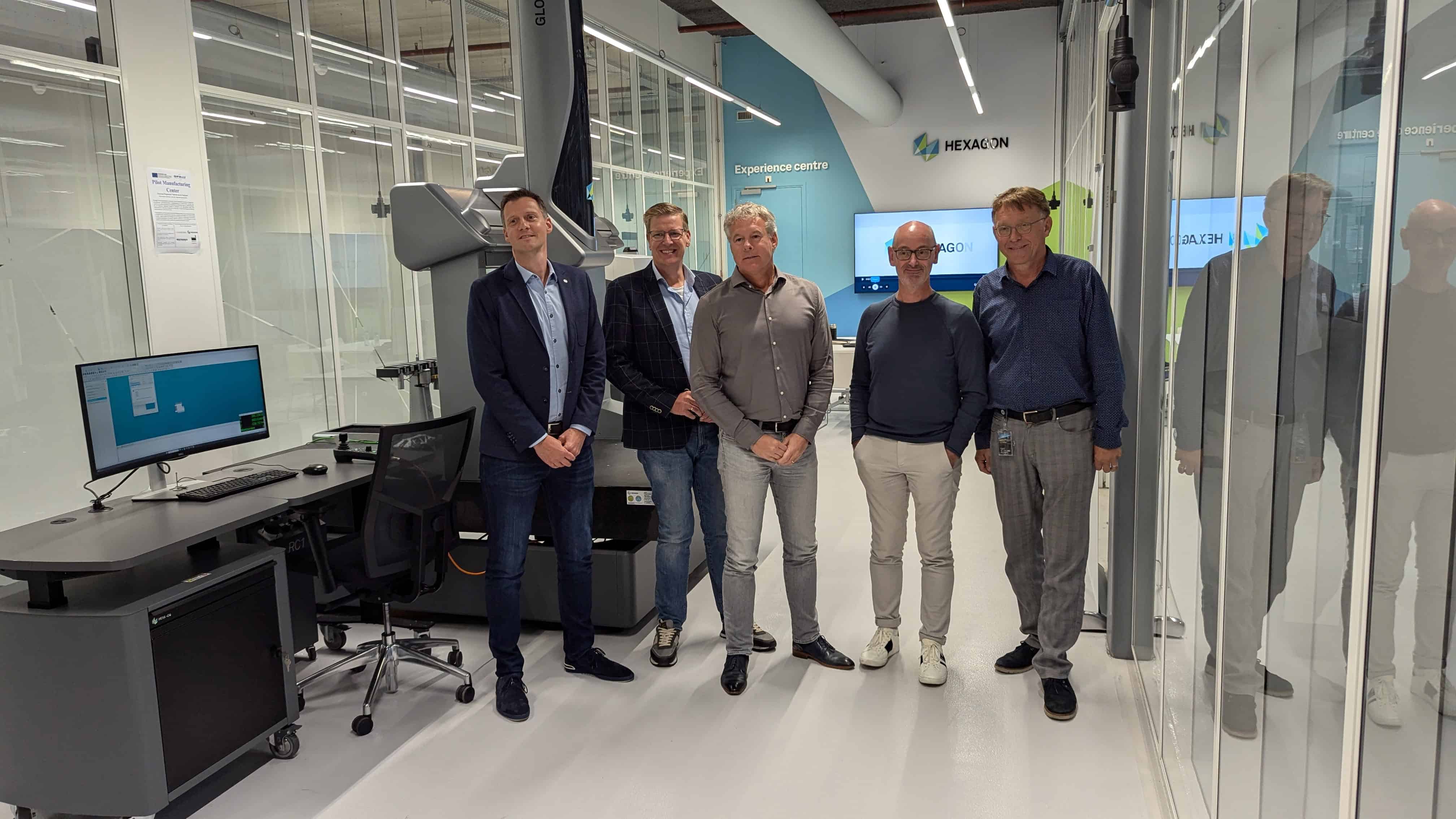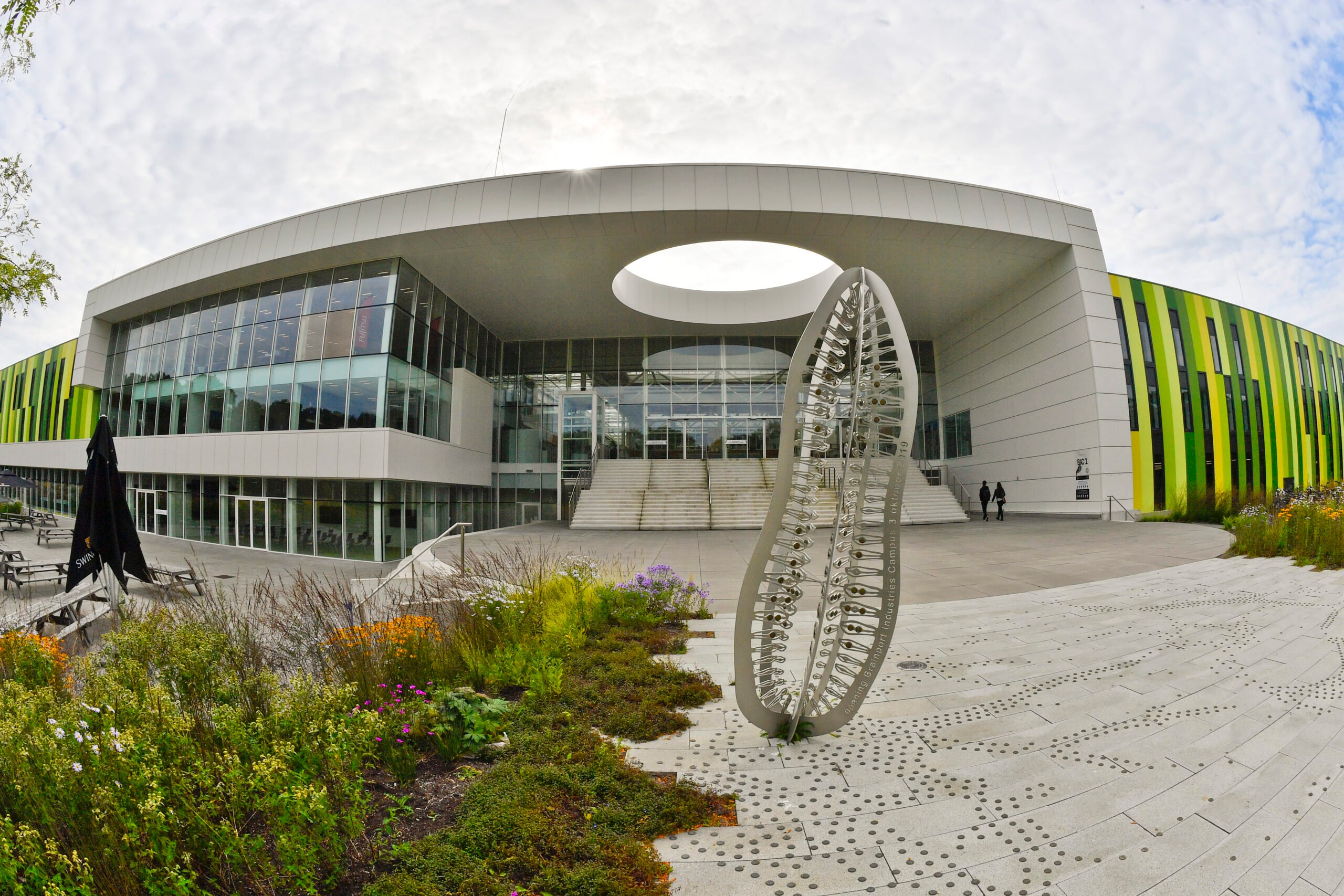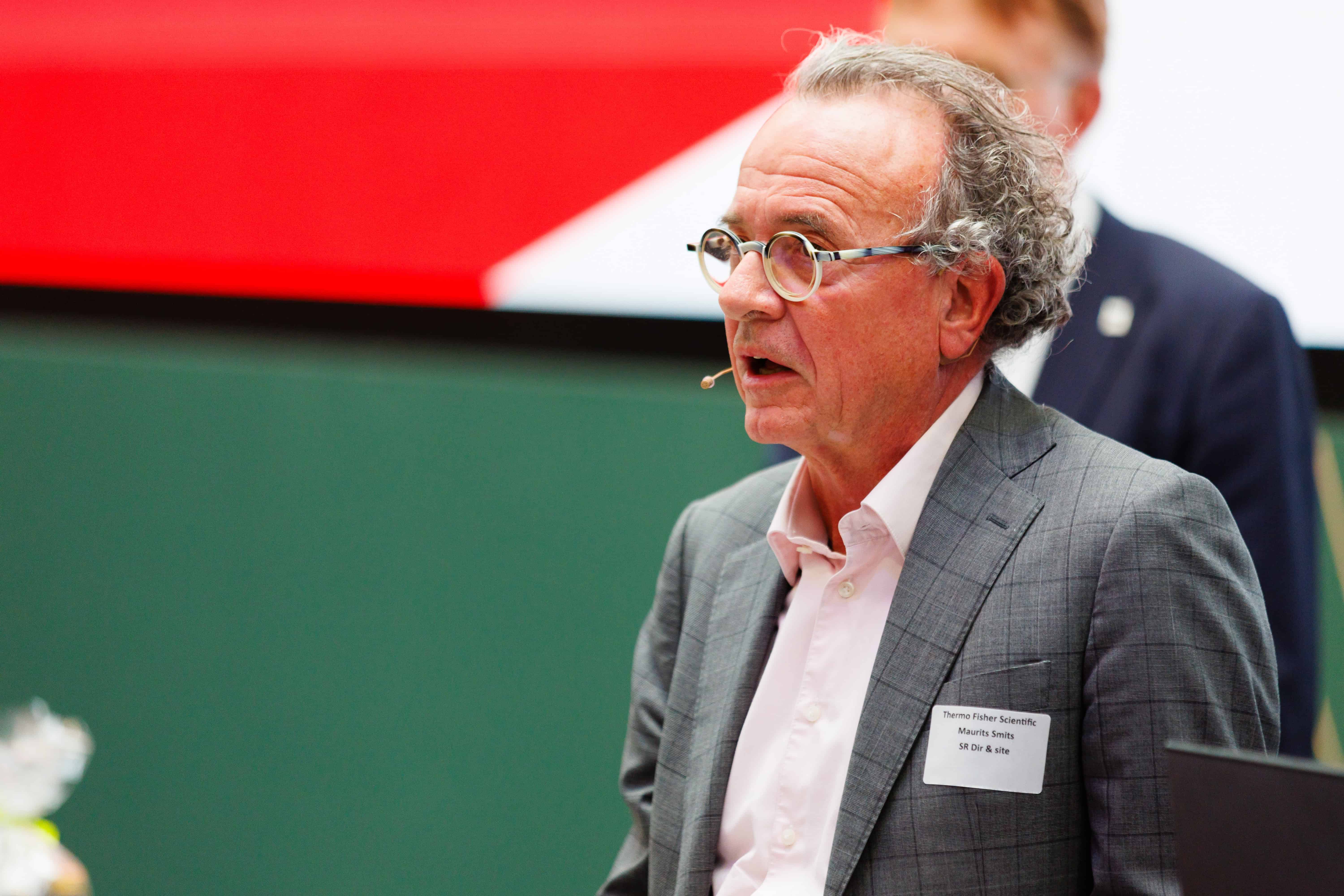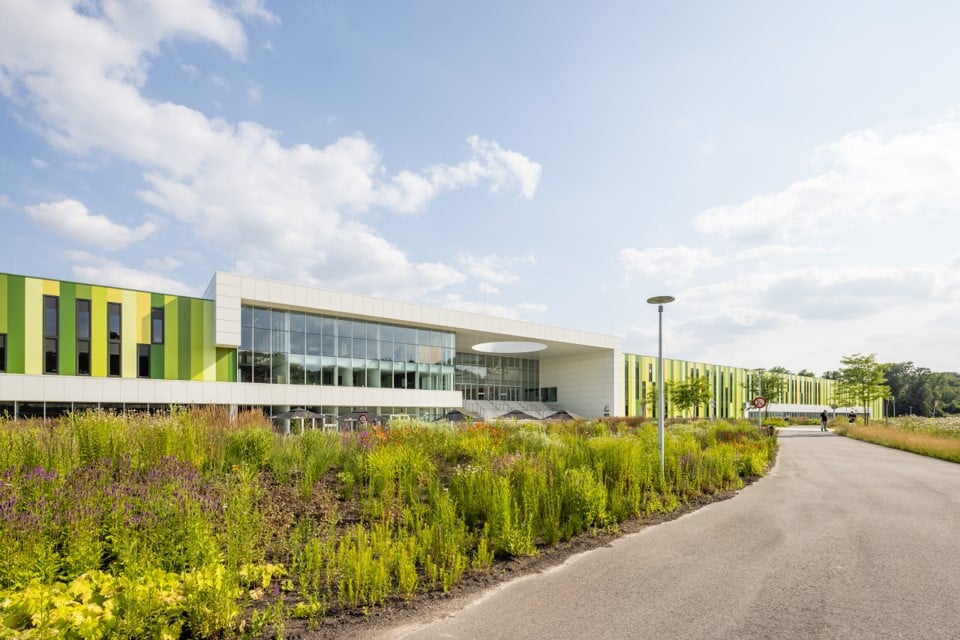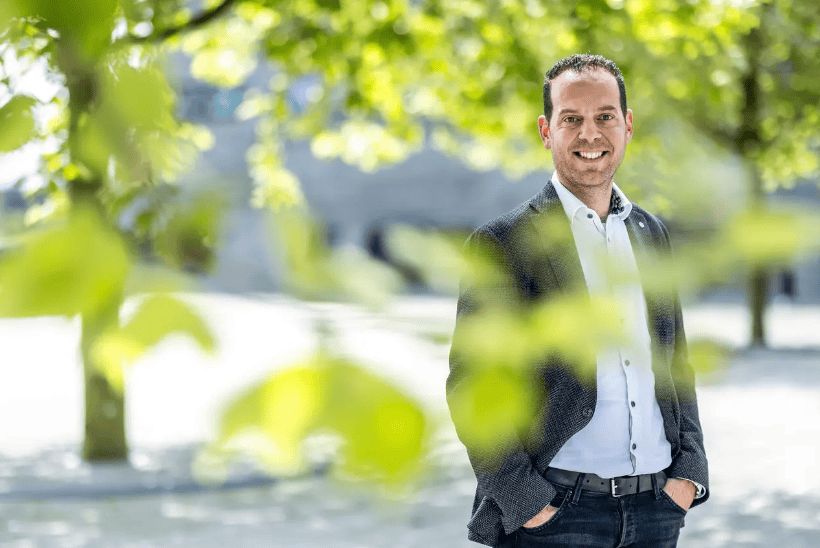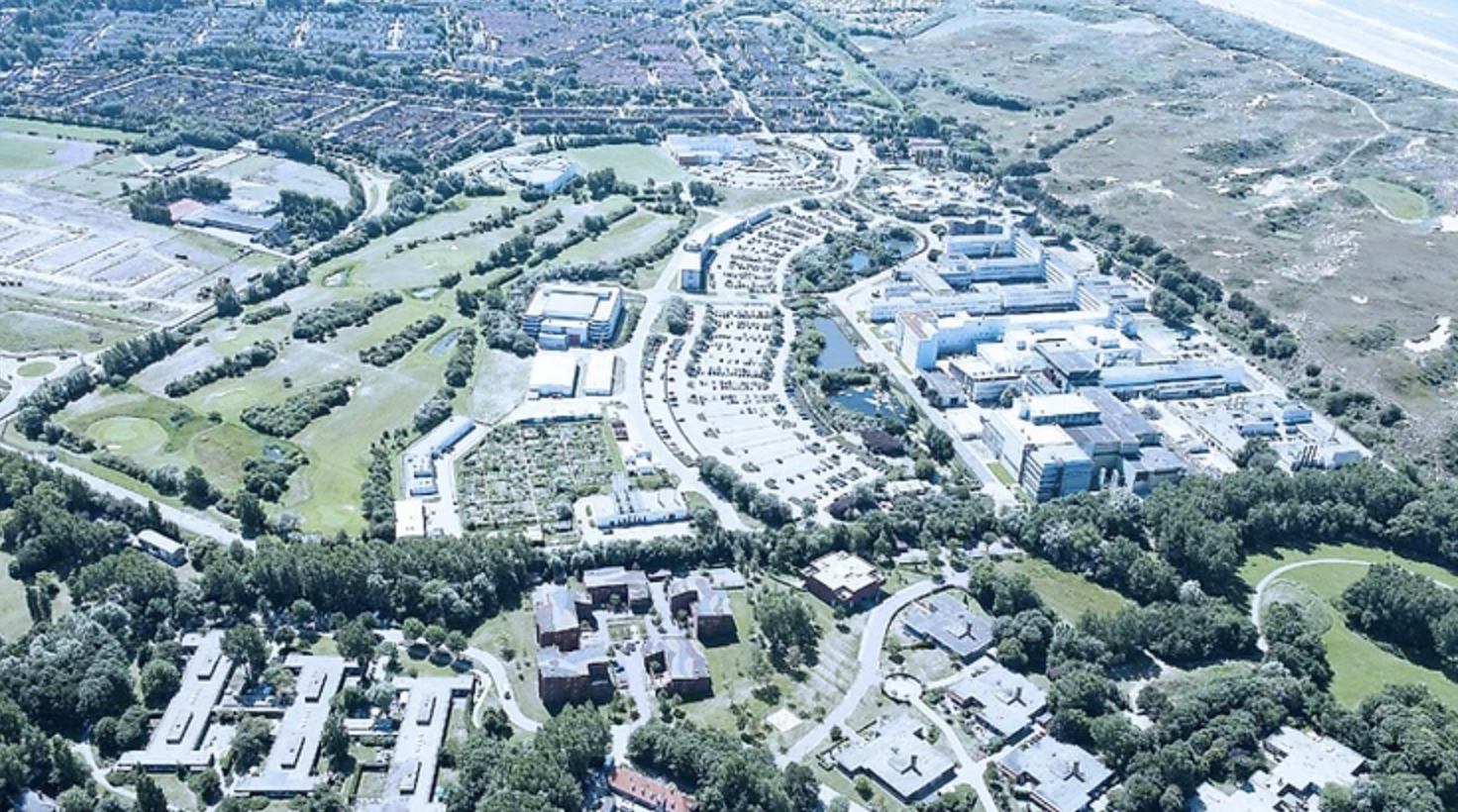
Many Dutch people will be familiar with Space Expo, which attracts over 100,000 visitors in normal years. But less visible is what else happens at the Noordwijk business park where ESTEC, the technical heart of the European Space Agency, ESA is located. Soon all that will be different. The goal is to create a fully-fledged space campus that positions itself as a European Space Hub in the international space sector and all the industries that can benefit from space-based solutions. With major players such as ESTEC, the ESA Business Incubation Centre (ESA BIC), and the Galileo Reference Centre (GRC) as anchor points, but also as the place for start-ups and knowledge institutions such as TU Delft, Universiteit Leiden, TNO, and SRON.
The new steps will affect both the campus grounds and the ecosystem that will emerge around it as a cluster. In the ‘Regiodeal ESTEC and Space Campus Noordwijk‘, the ambition was formulated for the first time in 2018 to transform the Space Business Park and thereby connect ESA ESTEC more strongly to the Dutch space ecosystem. This should create a strong European Space Hub and attract new national and international high tech and space companies.

Director Esther Peters of Space Campus Noordwijk has spent the past year working with the network around the campus to arrive at a shared vision for its development. And with success, because at the end of last year, the ‘Area Vision’ and the business case for the modular heart of the campus (‘the Basecamp’) were unanimously approved by the City Council of Noordwijk – meaning the implementation can start. “We still need many years to implement all our ideas, but next year we will already establish the new campus as the meeting place for the space sector, both digitally and physically. We are going to develop the content of the programming and the physical growth step by step. In the beginning, this may be done with tents and food trucks instead of official buildings, but you can be sure that we will make ourselves known. There has to be a stir!”
In the past year, a strategic multi-year plan has already been drawn up, community building has begun and cooperation with the Leiden-Delft-Erasmus universities has been established through the appointment of an LDE Liaison Officer Space Campus. This ensures that the universities are also more strongly connected to the campus and that the interaction of ESA ESTEC with the universities is strengthened. Peters: “The world is changing ever faster and we are all facing major challenges. Space technology offers countless possibilities for tackling these earthly challenges. Governments, knowledge institutions, and companies must therefore work together more intensively and more intelligently. The Campus is the platform for this. By stimulating and facilitating collaboration and through the mix of companies and functions – think of both R&D and business – the campus can grow into a hotspot for innovation in the application of space technology and space data.”
The beating heart

NL Space Campus will ultimately be both a physical location with a number of key players from the industry and the platform where the Dutch and international space sector can meet to share and apply knowledge. On top of that, it will be the place to connect to a broader audience. Space Expo has the ambition to develop the campus into a Space Experience. “The NL Space Campus will be the beating heart of a community of entrepreneurs, educational institutions, research organizations, government organizations and other social stakeholders,” says Peters. “Coincidental and less coincidental encounters lead to innovation. The trick is to ‘organize’ that coincidence. We are going to make sure that all these parties can meet here spontaneously and by appointment to help each other move forward.”
“Coincidental and less coincidental encounters lead to innovation. The trick is to ‘organize’ that coincidence.”
Esther Peters

The continued development of the Space Campus is partly possible thanks to the ‘Regiodeal’ in which the national government is investing 15 million euros in an International Meeting Facility at ESTEC. The Province of South Holland (8 million) and the Municipality of Noordwijk (3 million) are also investing heavily in the development of the campus. Renate Beausoleil, senior policy officer for Aerospace and Smart industry at the province, has high hopes. “Zuid-Holland is already highly regarded as a European space region, we’re not starting from scratch. But the development of the campus should give this an extra boost. This goes far beyond Noordwijk, the campus is in direct connection with other strong parts in the province: some 80% of all space activities in the Netherlands are in our province.”
Bridging the gap
Many of these activities are linked to the three South Holland universities (“LDE”: Leiden, Delft, and Erasmus Rotterdam), which have their own representative on the campus in the person of Peter Batenburg. With this position, Space Campus, together with the three institutions, aims to build a bridge between knowledge and its application. Batenburg: “Large institutes such as ESA ESTEC, SBIC, and the Galileo reference center are inextricably linked with the Space Campus. Together with the universities, the Netherlands has built up a strong international reputation in the field of space technology and research.”
Beausoleil, meanwhile, is looking forward to the development of the ‘Basecamp’, in the middle of the open terrain on the southeast side. “Partly thanks to the shared facilities and corporate housing provided there, the first meetings will soon take place. And that is an absolute prerequisite for the success of the campus. At the end of the day, every meeting can lead to innovations and new business. Economically and socially, that is of great importance.”
“Every meeting can lead to innovations and new business. Economically and socially, that is of great importance.”
Renate Beausoleil
“One big meeting place”

Noordwijk Alderman Roberto ter Hark also sees that as the biggest difference between the existing business park and the future campus. “Now we can make it much more into one whole. The companies that are already there are in fact, together with ESA ESTEC, GRC and the SBIC, the first campus residents, but thanks to the extra facilities we will be able to attract many more organizations, Ph.D. students, start-ups, and so on. Also from abroad. Now it is still a collection of companies, soon it will be one big meeting place.”
Ter Hark envisions three phases. “As a first step we will – this year – bring the central part of the terrain to life. After that, I’m looking forward to opening up the ESA ESTEC knowledge center as much as possible. Of course, I understand the reason for the fences around it, but at ESA they also realize that by sharing knowledge and really becoming part of our ecosystem the most beautiful things can happen. Ultimately – and this is the final phase – I see an international knowledge hub emerging here that will ensure that the whole world knows that if you want to be part of the Aerospace industry, you need to be in Noordwijk.”
“Now it is still a collection of companies, soon it will be one big meeting place.”
Roberto ter Hark
Not just for aerospace as such, Esther Peters immediately adds. “You often see innovations from space get an application in our daily lives. Without space travel, we would not have had a Teflon layer in our pans. Climate monitoring is unthinkable without satellites, the navigation in our car was developed directly from it, and you could go on like this.” In other words, space technology and space data provide solutions to earthly challenges. “We want to go from science to a global market. To translate research into solutions for the big challenges of our time. You see this very clearly, for example, in the ESA BIC program. This accelerator program explicitly aims to bring brilliant ideas, prototypes, and concepts to world markets faster and with more success.” Another example is Groundstation DotSpace, which is also part of Space Campus and stimulates the use of space data in other sectors, among other things.
Making it more relevant

For Netherlands Space Office (NSO) director Harm van de Wetering, better use of satellite-generated data is also one of the goals he wants to see realized with the construction of the campus. “In addition, the campus can make us more relevant for international space missions, with all the scientific and societal new knowledge that entails, and it can help the Netherlands build a stronger space sector.”
Van de Wetering calls ESTEC, with nearly 3,000 high-tech professionals, the country’s best-kept secret. “It’s the fourth R&D center in the Netherlands. If you see what all happens there, with more than 100,000 business visitors per year. All of them are literally sources of new knowledge, how nice would it be if you could keep them on campus a little longer than they are now. And yes, then a restaurant or common Basecamp may seem a bit superficial compared to the major other developments, but these are essential developments in the ultimate success.”
The NSO director also expects a lot from the international meeting facility being created with funds from the Regiodeal. “This functionality on the ESTEC site will contribute to the attraction of new activities towards ESTEC and in turn provide opportunities for the Space campus to engage those visitors.” The NSO itself is considering setting up an office on campus, in the future Basecamp. “This will allow NSO to receive domestic or foreign organizations on-site and explain the Dutch space approach and the programs that NSO manages to strengthen the aerospace industry in the Netherlands.”
Europe’s largest space technology center

An all-important role at the NL Space Campus is played by ESA ESTEC, Europe’s largest space technology center. No wonder director Franco Ongaro was one of the first advocates of the idea of a Space Campus. “In this way, the Dutch and international space community can benefit even more from our proximity,” Ongaro explains. “Our interest is to become even more relevant within this sector. We look forward to having a vibrant industrial and start-up community close to us.”
ESA ESTEC started the first ESA Business Incubator 15 years ago and moved to the current campus area after a few years. Ongaro: “Our main goal is to exchange ideas and knowledge, but also to show that our work benefits the community in which we live and that we are recognized for it. In addition, the new campus can ensure that new high-tech companies are attracted, also from outside the Netherlands.”
Ongaro would like to nuance the comments about ‘tearing down the fences’ and walls around ESA ESTEC. “Just look at the facts: in normal times ESA ESTEC receives more than 100,000 business visitors per year. In addition, Space Expo also attracts more than 100,000 tourists, day-trippers, and schoolchildren per year. Not to mention the 9,000 visitors to our annual Open Day. More than a thousand of our employees also work for the companies already established on Space Campus. Our experts are in daily contact with most of the space companies in Europe and our laboratories are ready to help with anything that is not commercially available. Don’t forget also what this means for the region: 3,000 employees and their families who are all part of life in and around Katwijk and Noordwijk. So I honestly don’t think a fence is an obstacle to the free exchange of ideas and knowledge. It’s already happening.”
Inspiration
It is clear that the mission to make Space Campus a success is now widely shared, both among public and private parties. This provides fertile ground for the ‘smart collaboration’, which Esther Peters believes will be decisive for the near future. “It can only succeed through a smart interplay between the various stakeholders and in close cooperation with the strong cluster around us. We can consider ourselves lucky that ESTEC is on our territory. Many international companies are already working with ESTEC and it is interesting for them too to have a base here and be part of our ecosystem. With all the associated opportunities for the Netherlands as well.”
An important step has been taken with the approval of the Area Vision. But that does not mean that the vision for the ideal campus is already complete. To be able to reach that point, inspiration has been drawn from campuses such as Harwell in the United Kingdom, High Tech Campus in Eindhoven, and Leiden Bioscience Park. “All of them have very different circumstances, of course, but what emerges each time is that campus is more than the sum of its necessary requirements. It’s also about creating a culture of mutual trust so that those meetings everyone is now talking about actually start to have an effect. And that’s what we’ve been building here from Day 1.”
“Building a campus is more than creating the sum of its necessary requirements. It’s also about creating a culture of mutual trust.”
Esther Peters



